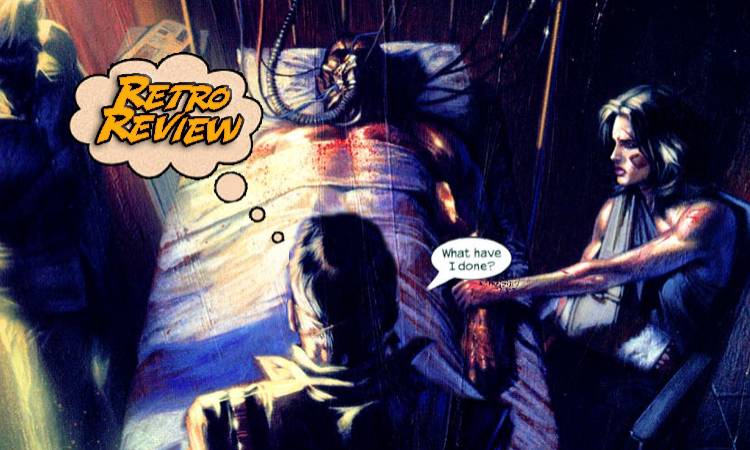In 1984, there was Secret Wars. In 2015, there was Secret Wars. But in between? There was Secret War.
Yes, it is very confusing. Your Major Spoilers Retro Review of Secret War #1 awaits!
 SECRET WAR #1
SECRET WAR #1
Writer: Brian Michael Bendis
Penciler: Gabriele Dell’Otto
Inker: Gabriele Dell’Otto
Colorist: Gabriele Dell’Otto
Letterer: Cory Petit
Editor: Andy Schmidt
Publisher: Marvel Comics
Cover Price: $3.50
Current Near-Mint Pricing: $10.00
Release Date: February 4, 2004
Previously in Secret War: The head of SHIELD since the Cold War era, Nick Fury was once a bastion of decency in what Shang-Chi called “games of deceit and death.” A conspiracy involving Life Model Decoys forced him to bring down his own organization, leading to the end of the Supreme Headquarters International Espionage Law-enforcement Division. Fury himself rebuilt the organization as the Strategic Hazard Intervention Espionage Logistics Directorate, filling the ranks with hand-picked agents that he knew were all on the up-and-up. Even so, Colonel Fury took the security of SHIELD seriously, having seen it collapse first-hand, which leads us to the story of how he began his own secret war with a sovereign nation.
Of course, in order for us to understand how it began, we first have to see how it ended.





Subsequent issues would show that the titular Secret War was Fury taking Daredevil, Cage, Spider-Man, Wolverine, and Captain America into Latveria and attempting a super-powered coup to overthrow von Bardas, taking the 9/11 parallels to even more obvious places. The only real fallout from this five-issue miniseries was the formation of the New Avengers, featuring all of those characters, an era of Avengers history that feels more alien and dated than Cap’s Kooky Quartet, or the madness of The Crossing does to today’s reader.
Dear Spoilerite,
At Major Spoilers, we strive to create original content that you find interesting and entertaining. Producing, writing, recording, editing, and researching requires significant resources. We pay writers, podcast hosts, and other staff members who work tirelessly to provide you with insights into the comic book, gaming, and pop culture industries. Help us keep MajorSpoilers.com strong. Become a Patron (and our superhero) today.
SECRET WAR #1
The fully-painted art by Gabriel Dell'Otto is too dark to comprehend, while the script has germs of utter brilliance that get shot down by excessive decompression, giving us a perfect encapsulation of post-Jemas Marvel.
It's a an intriguing start that ends up going nowhere.
-
Writing3
-
Art7
-
Coloring1



